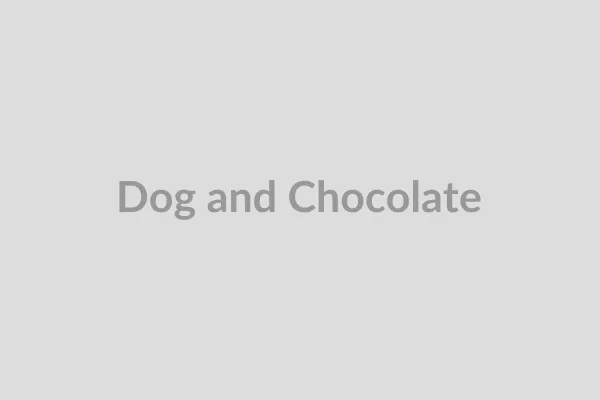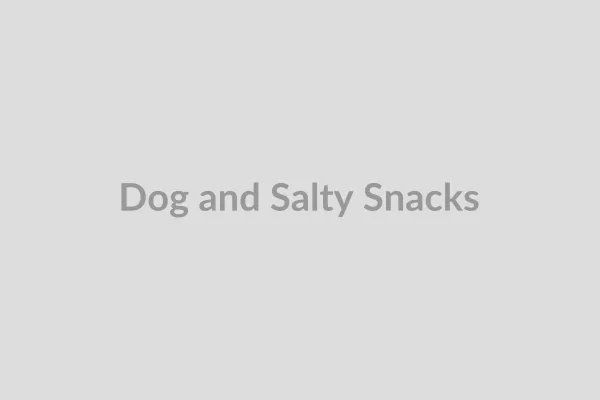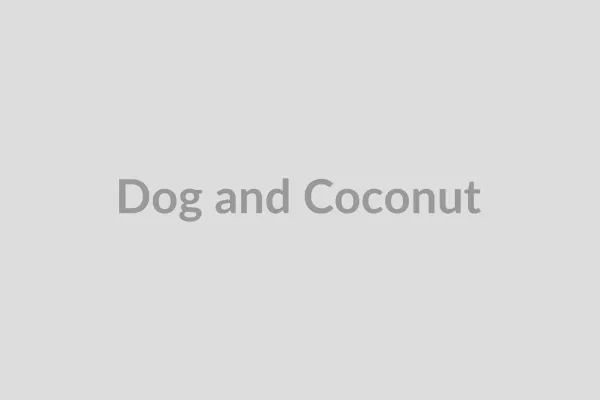As dedicated pet parents, we naturally want to share every aspect of our lives with our beloved canine companions, and that often includes food. It’s heartwarming to see your dog’s hopeful eyes as you enjoy a meal, but knowing what are things that dogs can’t eat is crucial for their health and safety. While some human foods are perfectly safe and even beneficial for dogs in moderation, many common kitchen staples can be incredibly dangerous, leading to severe illness, or even death. Understanding which foods fall into the “do not feed” category is not just good practice—it’s an essential part of responsible dog ownership.
This guide from Dog Care Story will walk you through a detailed list of foods your dog should never consume, divided into two main categories: those that are outright toxic and demand immediate veterinary attention, and those that are dangerous and best avoided to prevent potential health issues. Equipping yourself with this knowledge can save your furry friend from an emergency trip to the vet and ensure they live a long, healthy, and happy life by your side. For a quick reference of what foods to strictly avoid, you might want to check out our comprehensive what not to feed dogs list.
Toxic Foods Your Dog Must Avoid
If your dog accidentally consumes any of the items in this list, time is of the essence. It’s imperative to contact your veterinarian immediately for guidance, as prompt action can significantly improve the outcome.
1. Chocolate, Coffee, and Caffeine
These popular human treats all contain methylxanthines, a group of substances found in cacao seeds. When ingested by dogs, methylxanthines act as stimulants that can lead to a range of severe symptoms. These include vomiting, diarrhea, restlessness, hyperactivity, and potentially life-threatening cardiac changes. In more serious cases, tremors, seizures, and even death can occur. The severity of the reaction is dose-dependent, meaning smaller dogs or those who consume larger quantities are at higher risk. Darker chocolates, especially baking chocolate, contain higher concentrations of methylxanthines and are therefore far more dangerous than milk or white chocolate. If your dog has eaten chocolate, coffee, or anything with caffeine, do not delay—call your vet right away to discuss the next steps.
 A small dog looking longingly at a piece of dark chocolate on a table
A small dog looking longingly at a piece of dark chocolate on a table
2. Xylitol
Xylitol is a common artificial sweetener found in a surprising number of everyday products, including sugar-free candies, chewing gum, certain brands of peanut butter, and even toothpaste. For dogs, xylitol is profoundly toxic. Its ingestion rapidly triggers a powerful release of insulin in the dog’s body, which leads to a swift and dangerous drop in blood sugar (hypoglycemia). This can manifest as sudden weakness, vomiting, profound lethargy, loss of coordination, and even seizures. Without immediate treatment, xylitol poisoning can progress to liver failure, making it an extremely serious concern. Always check ingredient labels on human foods and products, especially if your dog has access to them.
3. Macadamia Nuts
Many people enjoy macadamia nuts for their rich, buttery flavor and unique texture in various recipes. However, these nuts are strictly off-limits for dogs. While the precise toxic compound in macadamia nuts remains unknown, it’s clear that even a small amount can cause significant adverse reactions in canines. Symptoms often include weakness, particularly in the hind limbs, vomiting, tremors, depression, and an elevated body temperature. Although typically not fatal, macadamia nut poisoning can be distressing and requires veterinary attention to manage symptoms and ensure recovery.
4. Grapes and Raisins
Perhaps one of the most enigmatic toxins for dogs, grapes and raisins can cause acute kidney failure, which can be fatal. What makes them so dangerous is that the exact toxic agent has yet to be identified, and the susceptibility varies wildly among dogs. Some dogs may have eaten grapes or raisins in the past without issue, only to suffer severe poisoning from a small amount later. Because of this unpredictable and severe potential outcome, it is best to err on the side of extreme caution and consider all grapes and raisins toxic to dogs, avoiding them entirely. If you suspect your dog has eaten any amount, contact your vet immediately.
5. Garlic, Onions, and Chives
Belonging to the Allium family, these common culinary ingredients are highly toxic to dogs, with cats generally being even more sensitive. This group includes garlic, onions, chives, leeks, and shallots. The sulfur-containing compounds in these plants can damage a dog’s red blood cells, leading to a condition known as Heinz body anemia. This type of anemia can cause weakness, lethargy, reduced exercise tolerance, depression, vomiting, diarrhea, changes in heart and respiratory rates, and in severe cases, red-tinged urine, collapse, and even death. Whether raw, cooked, or powdered, all forms of Allium plants are dangerous, so keep them out of your dog’s reach.
6. Alcohol
While most dogs aren’t inclined to seek out alcoholic beverages, some might drink it if offered or if they stumble upon an unattended drink. This is unequivocally a food item your dog absolutely cannot consume. All forms of alcohol, including beer, wine, spirits, and foods containing alcohol (like some desserts), can cause severe intoxication in dogs. Symptoms range from vomiting, diarrhea, and difficulty breathing to loss of coordination, tremors, and even coma or death. The smaller the dog, the less alcohol it takes to cause severe toxicity. Ensure all alcoholic products are stored safely out of your pup’s reach.
7. Yeast Dough
Many people know that fully baked bread is generally safe for dogs in small amounts. However, uncooked yeast dough presents a unique and serious double threat. When ingested, the warm, moist environment of a dog’s stomach causes the yeast to ferment and expand, producing large amounts of gas. This can lead to severe abdominal pain and a potentially life-threatening condition called gastric dilatation-volvulus (GDV), or bloat and torsion, where the stomach twists on itself. Additionally, the fermenting yeast produces ethanol, which can cause alcohol intoxication, leading to symptoms similar to those of alcohol ingestion. Even a small amount of raw yeast dough can be problematic, so keep it away from your dog.
Other Foods That Can Be Dangerous for Dogs
While the following foods are not typically classified as acutely toxic, they can still cause significant health problems for dogs, ranging from gastrointestinal upset to serious long-term conditions. It’s best to avoid feeding these to your dog, even if they’ve shown no adverse reactions in the past. If your dog consumes any of these items and exhibits signs of illness, contact your veterinarian promptly.
1. Milk and Dairy Products
Many humans enjoy dairy products as part of a balanced diet, but for our canine friends, the story is different. A significant number of dogs are lactose intolerant, meaning they lack the enzyme lactase needed to break down the sugars in dairy. Ingesting dairy can lead to gastrointestinal upset, including vomiting, diarrhea, and abdominal pain. Furthermore, many dairy products are high in fat, which can trigger an inflammatory condition of the pancreas called pancreatitis. Pancreatitis can be extremely painful and severe, sometimes even fatal, and can lead to chronic health issues. As such, it’s safer to avoid giving your dog milk, cheese, and other dairy items.
2. Salt and Salty Snacks
While a tiny amount of salt isn’t inherently harmful, large quantities are considered toxic for dogs, leading to sodium ion poisoning. Although most dogs are unlikely to consume enough pure salt to be poisoned, an excessive intake of salty snacks can lead to health problems. Dogs with pre-existing conditions like high blood pressure, heart disease, or kidney disease are particularly sensitive to the effects of salt. Symptoms of excessive salt intake include increased thirst and urination, vomiting, diarrhea, and depression. In severe cases, this can progress to tremors, seizures, and even death. A dropped potato chip might be harmless, but salty human foods should never be a regular part of your dog’s diet. To help you manage what your dog eats, here’s a helpful resource on what foods are safe for dogs to eat.
 A dog looking at a bowl of heavily salted potato chips
A dog looking at a bowl of heavily salted potato chips
3. Raw Meat, Raw Eggs, and Bones
Despite the belief by some that these are “natural” foods for dogs, feeding raw meat, raw eggs, and bones carries significant risks. Raw meat and eggs can harbor dangerous bacteria such as Salmonella and E. coli, which can cause severe gastrointestinal illness in both your dog and potentially in you. Raw eggs also contain avidin, an enzyme that can interfere with the absorption of biotin (a B vitamin), potentially leading to skin and coat problems over time.
Bones, whether raw or cooked, pose multiple hazards. They can cause choking, obstruct the intestinal tract, or even splinter and perforate the stomach or intestines, leading to life-threatening internal injuries. While your dog might enjoy gnawing on something, it’s much safer to offer appropriate chew toys or vet-approved dental chews. Many dog owners are concerned about specific types of meat; if you’re wondering what meat is dangerous for dogs, this article can provide further insights.
4. Citrus
Citrus fruits like lemons, limes, and oranges, while generally not acutely toxic in small amounts, can cause gastrointestinal irritation if consumed in large quantities. The essential oils found in the peels, seeds, and leaves tend to contain higher concentrations of compounds that can lead to digestive upset and, in rare severe cases, central nervous system depression. An occasional small piece of citrus fruit is unlikely to cause a problem, but it should not become a regular part of your dog’s diet due to the potential for stomach upset.
5. Coconut and Coconut Oil
Small amounts of coconut or coconut-containing products are not generally considered to cause serious harm to dogs. However, the medium-chain triglycerides in coconut can sometimes trigger diarrhea and general gastrointestinal upset in sensitive dogs. Furthermore, coconut water is relatively high in potassium, which could pose a risk for dogs with pre-existing heart or kidney conditions by causing electrolyte imbalances. Therefore, while not strictly toxic, it’s best to offer coconut products sparingly and monitor your dog for any adverse reactions. For more on specific meats, understanding what meat should never be fed to dogs is crucial.
 A small dog curiously sniffing a coconut half on a kitchen counter
A small dog curiously sniffing a coconut half on a kitchen counter
6. Nuts (General)
While specific nuts like macadamia nuts are definitively toxic, many other types of nuts also pose risks for dogs and are best avoided. All nuts are notoriously high in calories, and many are rich in oils and fats. This high-fat content can easily trigger vomiting, diarrhea, and, most critically, pancreatitis—a painful and potentially life-threatening inflammation of the pancreas. Black walnuts are another example of nuts that are toxic to dogs and should be completely avoided. Almonds and pecans, while not directly toxic, are high in fat and can cause digestive issues or even blockages due to their size and shape. Any nuts fed to dogs should be in very limited amounts, only after thorough research into their safety, and preferably avoided altogether given the potential for harm. If you’re specifically looking for details on meats, our article on what meat should dogs not eat provides essential information.
What Foods Can Dogs Safely Eat?
While this article focuses on what are things that dogs can’t eat, it’s also helpful to know that some human foods are generally safe for dogs and can be offered as occasional treats. These include items like plain cooked chicken, carrots, apples (without seeds), green beans, and blueberries. However, even with safe foods, moderation is key—treats should always constitute less than 10% of your dog’s daily caloric intake to prevent nutritional imbalances.
It is always advisable to consult with your veterinarian before introducing any new human foods into your dog’s diet. Commercial dog food is formulated to be nutritionally complete and balanced for your pup’s specific needs. Overfeeding human foods, even safe ones, can disrupt this balance and potentially lead to malnutrition or obesity. Stick with dog-safe human foods, offer them in small quantities, and prioritize their balanced commercial diet.
Conclusion
Understanding what are things that dogs can’t eat is a fundamental aspect of providing responsible and loving care for your pet. From outright toxic items like chocolate and xylitol to potentially dangerous foods like high-fat dairy or certain nuts, being informed allows you to create a safe home environment for your canine companion. Always be vigilant about what your dog has access to, especially in the kitchen or during family meals.
When in doubt, it’s always best to err on the side of caution and withhold the food. If you suspect your dog has ingested any harmful substance, do not hesitate—contact your veterinarian or an emergency animal clinic immediately. Your quick action could make all the difference in a positive outcome. For more detailed information and tips on pet nutrition and safety, continue exploring our comprehensive resources at Dog Care Story!
